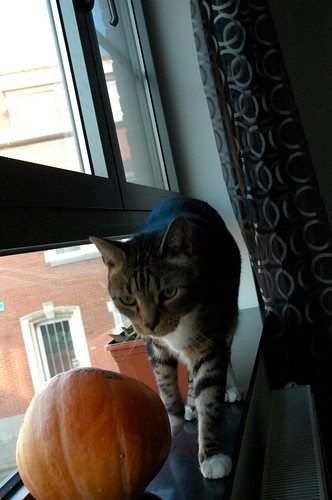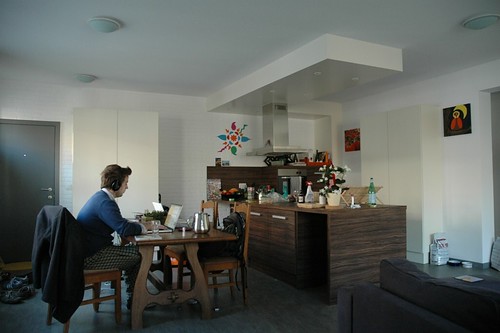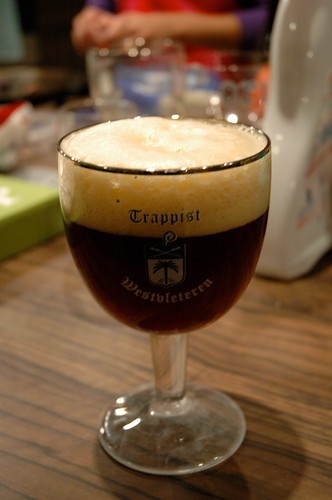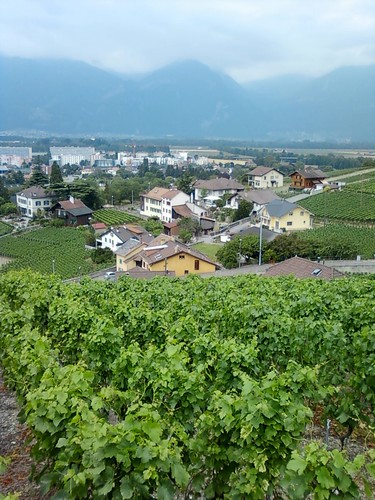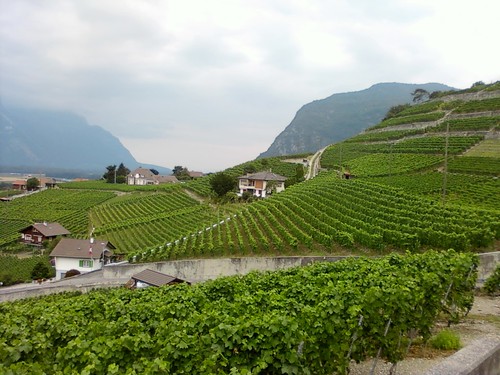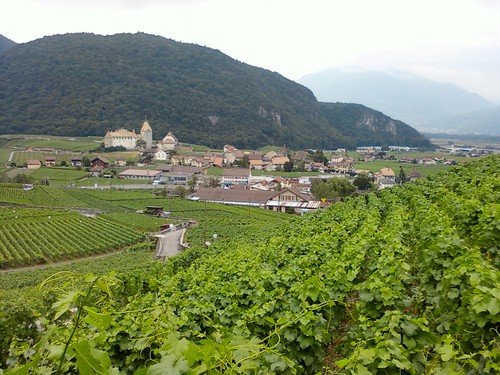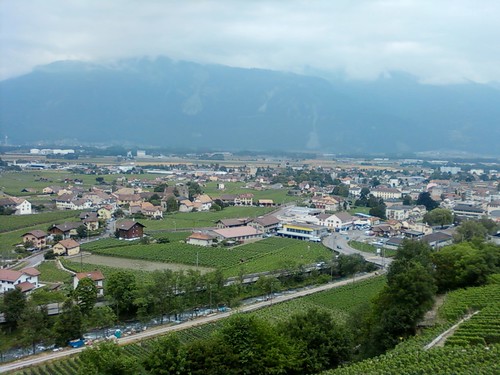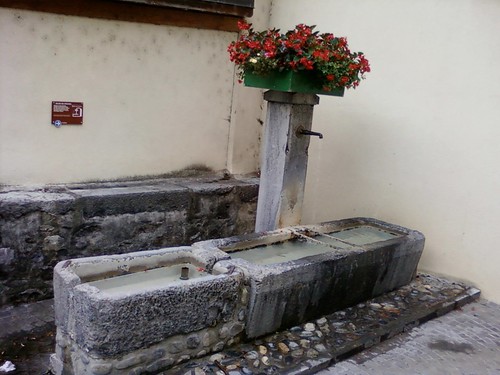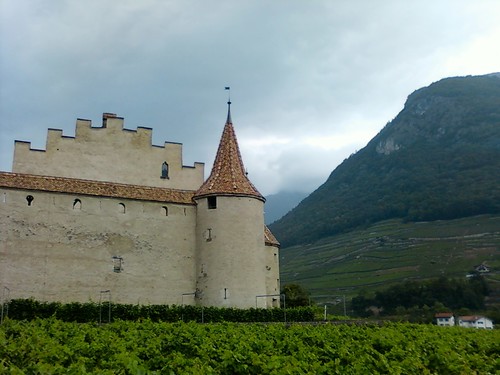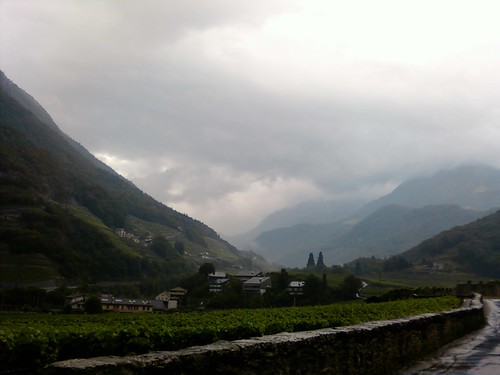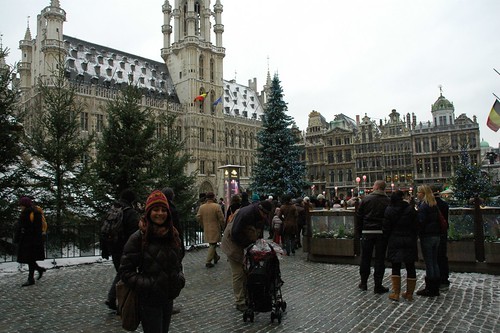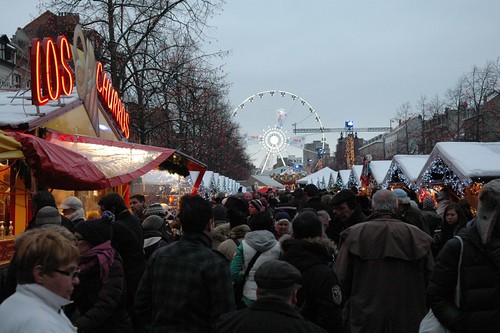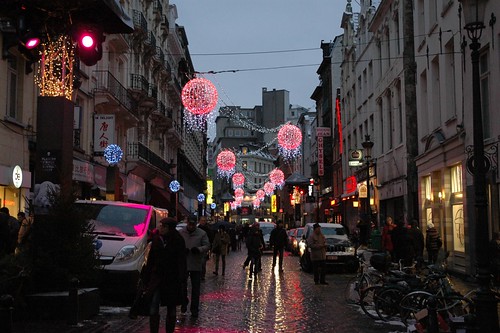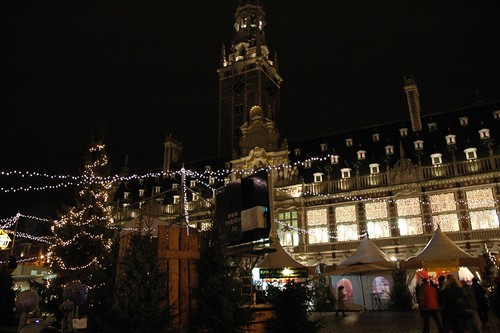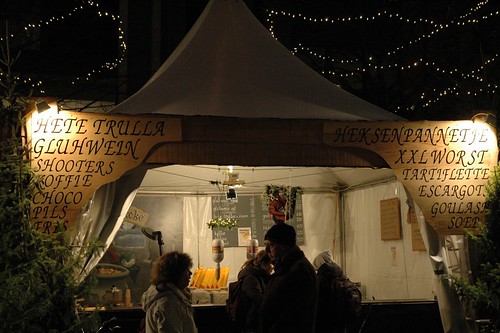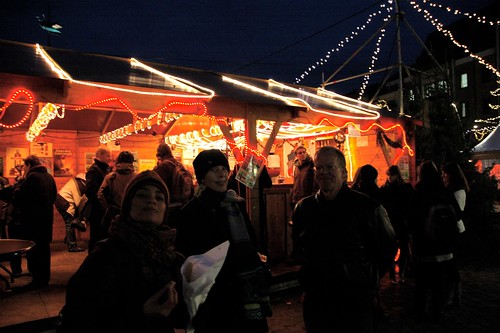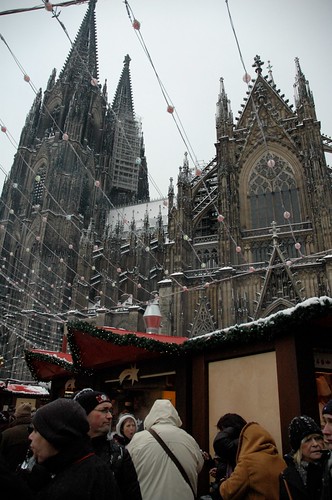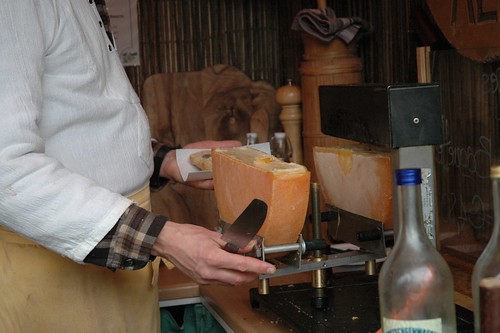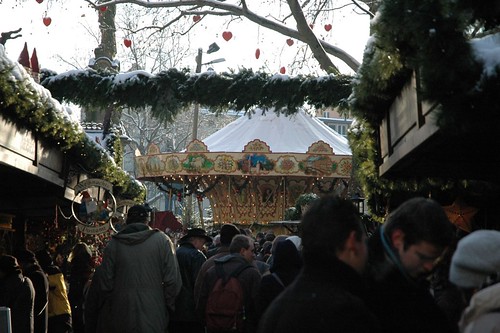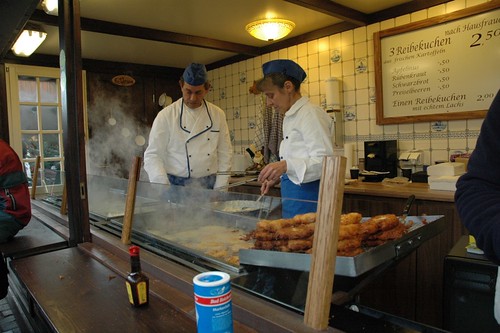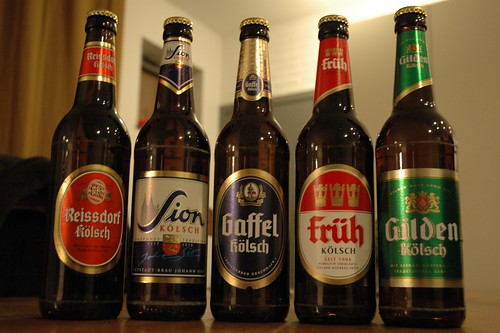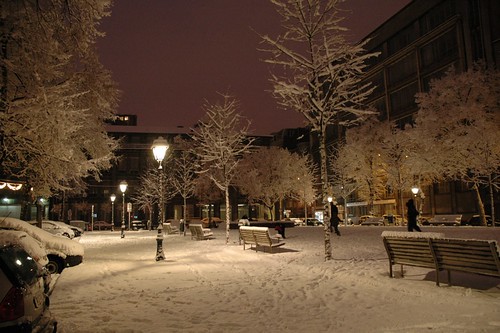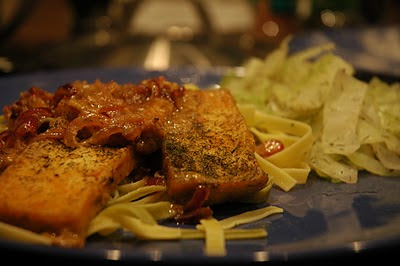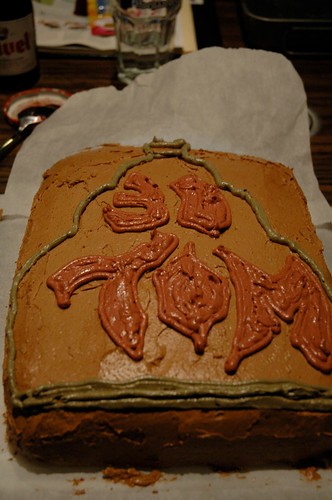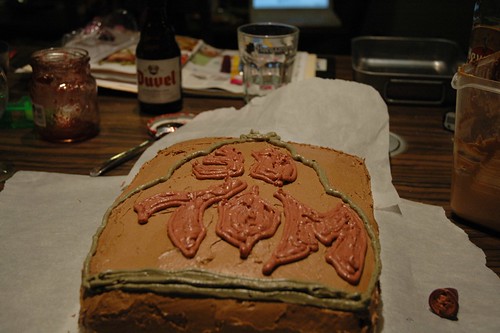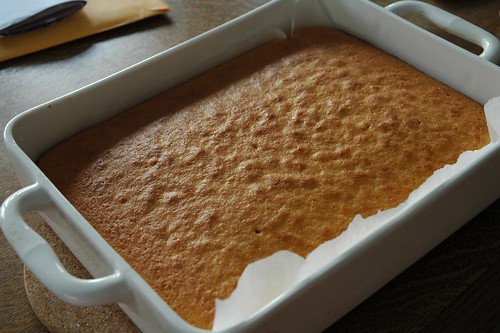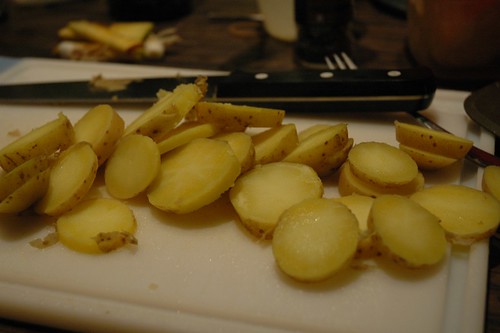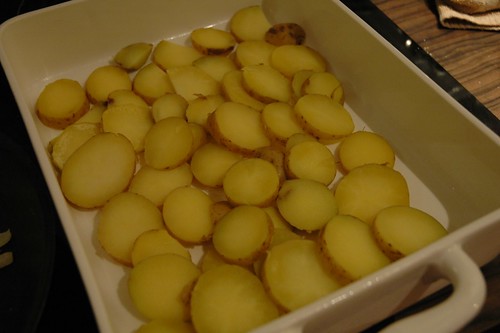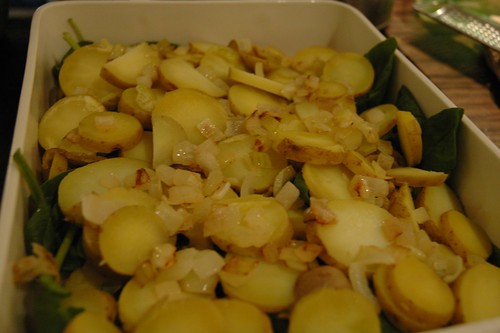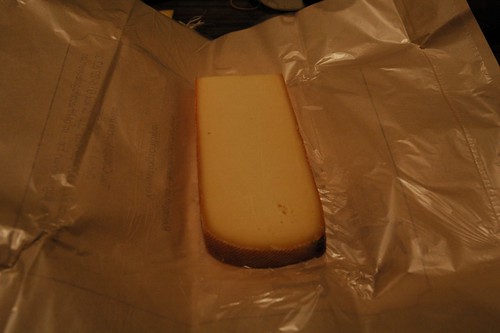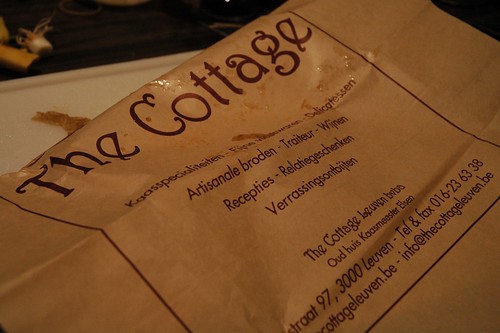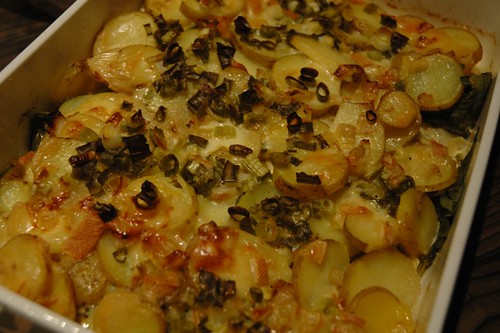above: pumpkin-Thai soup with portobello mushrooms
above: pumpkin
above: Duds checking out the pumpkin
Khavanu Kitchen
This pumpkin Thai-style soup can be served alone or served along with rice. To complete the meal, I topped the soup bowls with slices of grilled portobello mushrooms. We have a Thai grocery store which sells ready-made curry pastes, but any of the grocery store varietals will work. Panang flavors are usually served with dry stir-fries as opposed to being stirred into coconut milk. The flavors blend very well with the sweet pumpkin, and is not spicy, instead lending the soup just a little bit of heat.
You could use butternut squash, or another kind of winter squash, even cubed carrots could work. The pumpkin that is grown and available in Belgium is the culinary variety; if using pumpkin, buy one that is meant for cooking, it will hold it’s shape better, and tastes delicious.
Before getting started, wipe down the mushrooms (if using) and get the rice cooking first. Make the dressing for the portobellos while the soup is cooking. It looks like a long list with many directions, but read it through before beginning - it comes together very fast.
Serves: 4
Ingredients:
1 cup long-grain rice, cooked according to package directions
4 small portobellos (2-3 inches in diameter), wiped clean and stem removed if too bulky
1 small-medium pumpkin, or about 2 cups cubed pumpkin (1-inch chunks)
2 cups water, used to pre-cook pumpkin cubes
1 tsp peanut oil
1 tbsp fresh ginger, chopped fine
2 cloves garlic, chopped
1 green bell pepper, diced into 1-inch chunks
1 small red onion, sliced
1 vegetarian bouillon cube, dissolved in 1 cup of hot water
½ tsp salt
2 tsp Panang curry paste (you can adjust this amount, it may need more or less)
1 can coconut milk
2 cups water, divided.
You could use butternut squash, or another kind of winter squash, even cubed carrots could work. The pumpkin that is grown and available in Belgium is the culinary variety; if using pumpkin, buy one that is meant for cooking, it will hold it’s shape better, and tastes delicious.
Before getting started, wipe down the mushrooms (if using) and get the rice cooking first. Make the dressing for the portobellos while the soup is cooking. It looks like a long list with many directions, but read it through before beginning - it comes together very fast.
Serves: 4
Ingredients:
1 cup long-grain rice, cooked according to package directions
4 small portobellos (2-3 inches in diameter), wiped clean and stem removed if too bulky
1 small-medium pumpkin, or about 2 cups cubed pumpkin (1-inch chunks)
2 cups water, used to pre-cook pumpkin cubes
1 tsp peanut oil
1 tbsp fresh ginger, chopped fine
2 cloves garlic, chopped
1 green bell pepper, diced into 1-inch chunks
1 small red onion, sliced
1 vegetarian bouillon cube, dissolved in 1 cup of hot water
½ tsp salt
2 tsp Panang curry paste (you can adjust this amount, it may need more or less)
1 can coconut milk
2 cups water, divided.
2 tbsp chopped chives or cilantro
Dressing for portobello’s:
1 tbsp rice vinegar
1 tbsp soy sauce
small pinch red chili flakes
Directions:
Dressing for portobello’s:
1 tbsp rice vinegar
1 tbsp soy sauce
small pinch red chili flakes
Directions:
- Prepare rice according to package directions. The water to rice ratio for long-grain rice is usually 2 cups water : 1 cup rice - although my way of cooking rice is measuring the water with my ring finger (obviously not package directions). The water plus rice should come up half-way on your ring finger. It’s my mom’s method, and it works everytime.
- Wipe down mushrooms, and trim off stems.
- In a large soup stockpot, heat up water until a low simmer, and then add pumpkin chunks. Simmer for 10 minutes. Remove all of it to a large bowl.
- In the same soup stockpot, heat 1 tsp peanut oil over medium-high heat. Once hot, add in ginger and garlic, saute a few minutes until fragrant. Add in bell pepper chunks, onions, and cooked pumpkin along with reserved water. Stir to combine.
- Add in vegetarian bouillon along with with water/broth it was dissolved in. Add 1 cup water to the pot. Leave 1 cup on the side for now. You can see if it your soup needs it once the coconut milk is added.
- Mix the coconut milk and panang curry together. Add this to the soup pot. Stir well to combine.
- Bring to a simmer, adjust taste for salt, and add in the extra 1 cup water if the soup is too dense. Do not boil, leave it at a rolling simmer while you prepare the mushrooms.
- Heat up a wide skillet over medium-high heat. Spray with cooking spray, and add mushrooms. Cook on each side about 2 minutes. Mushrooms are done in about 8 minutes. Prepare the dressing while they cook, by combining the rice vinegar, soy sauce, and red chili flakes in a small bowl.
- Take mushrooms off heat, slice mushrooms and toss them with the dressing.
- To serve, fill bowls with ½ cup cooked rice, top with 1 and ½ cups soup, and top with 1 portobello mushroom. Garnish with chives or chopped cilantro.
We served this with a strong Belgian dark ale, Westvleteren 12, a beer with notes of cinnamon and spicy sweetness clears the palette with this soup. A St. Bernardus Abt would pair the same way. Living in Belgium does have it's perks =)



